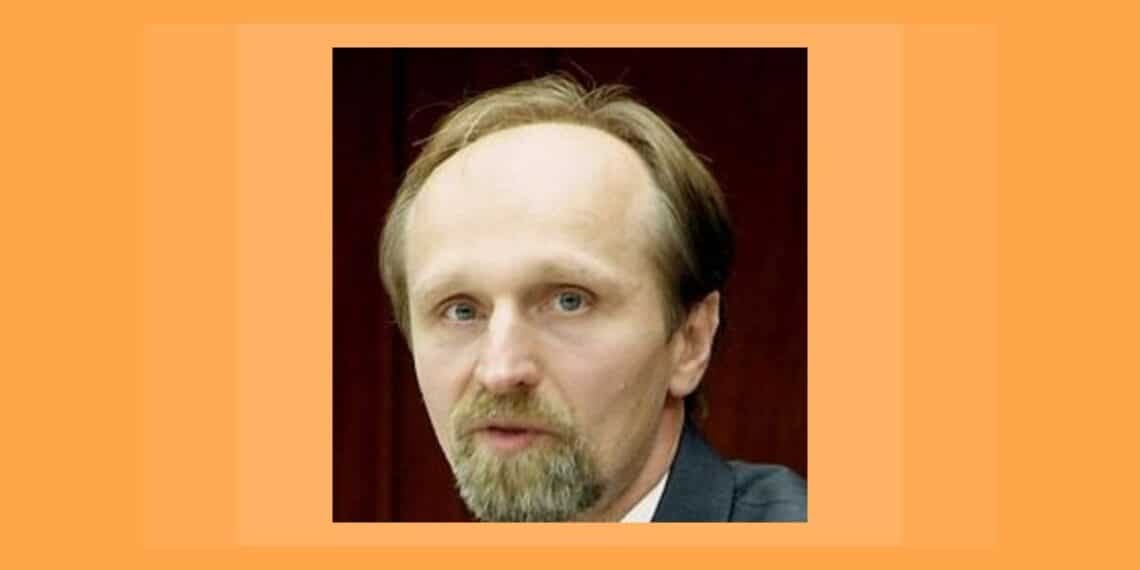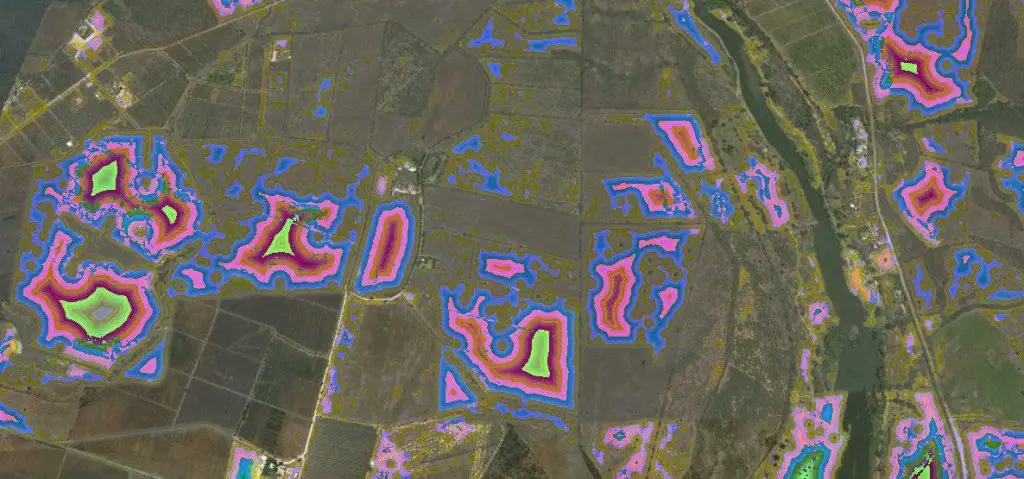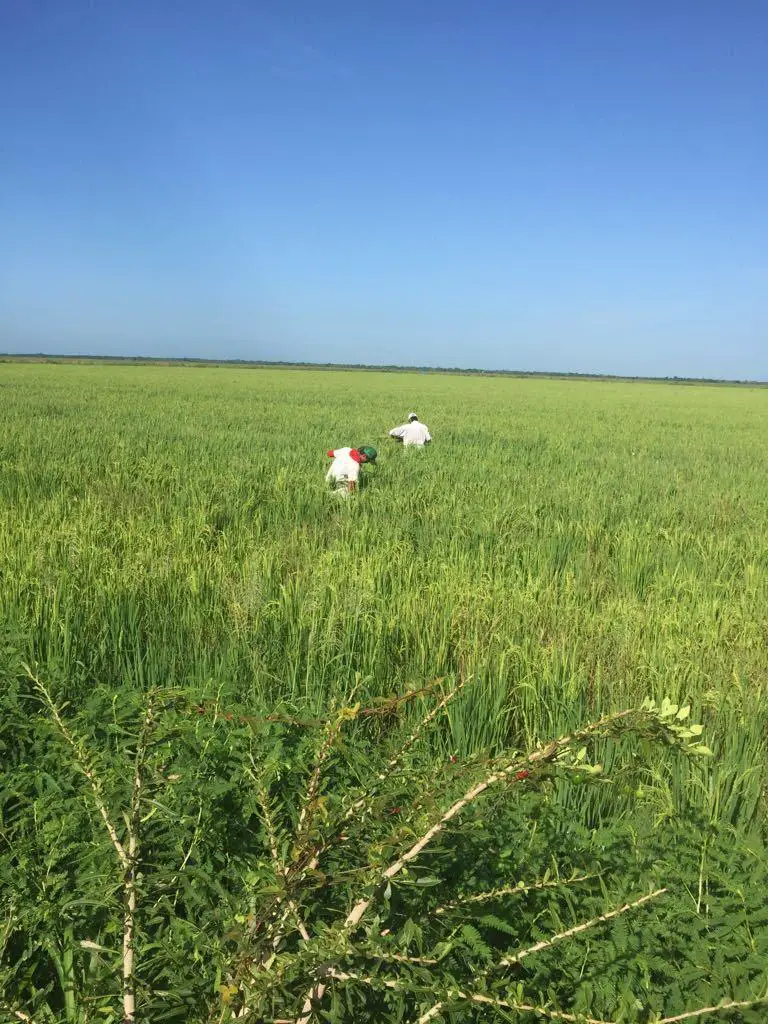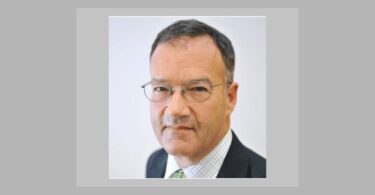Radko Tichavsky was born in the Czech Republic. He has lived in Mexico for more than 35 years and is one of the most important agrohomeopaths in the world. He is the author of the books Handbook of Agrohomeopathy (2007) and Homeopathy for Plants (2009), and he is the creator of Holohomeopathy. Radko teaches extensively in Mexico and abroad, giving workshops and courses about organic gardening, healthy living, holistic education, healing your garden, medicinal plants, ecological microcrops, energetic agriculture, agrohomeopathy and holohomeopathy. He regularly publishes articles in special journals and internet portals. He is the director of the Comenius Institute (comenius.edu.mx). Fascinating details can be found in our first interview: https://hpathy.com/homeopathy-interviews/radko-tichavsky/
KS: Welcome back at Hpathy, Radko! You are the homeopathic plant doctor who regularly answers our reader’s questions with regard to plants, a column which is well perceived and much appreciated. You have already been in our hot seat in 2010. Meanwhile a lot has happened in the world of agrohomeopathy. What are the most recent developments in the field of treating plants homeopathically?
RT: In recent years, agrohomeopathy has undergone an intense development: It started from anthropocentric models, with little scientific experimentation, small scale application and almost always extrapolating the operation of homeopathic remedies from human materias medicas and repertoires. Later it undertook its own flight to extend the agrohomeopathic materia medica by innumerable remedies which pertain to this speciality and aren’t used in human homeopathy.
Although there is much in common between plants and humans, since we share about 50% of the genetic material, homeopathy in plants has its own logic and it is forming its own repertoires and specific agrohomeopathic materials for each crop. While human homeopathy serves a single species (Homo sapiens), agrohomeopathy or holohomeopathy attends to hundreds of species, each with different metabolic pathways, different secondary metabolites and very specific coexistences with other living organisms.
In plants, homeopathy also modifies some important aspects not contemplated by Hahnemann, regarding the laboratory technique (preparation of remedies). For example, while in human homeopathy we prepare the mother tinctures, usually in ethyl-alcohol, in agrohomeopathy and holohomeopathy we use different solvents, depending on the secondary metabolites present in each plant and their solubility. For instance, we use different types of oil, methylalcohol, ether, physiological saline, acetone, and we practice different dynamization modes, for example the JT dynamization that modifies the number of succussions and the proportion of liquid in the bottle in their relation to the “empty” space in the bottle.
We also developed our own techniques concerning the use of homeopathy in large quantities, when large areas of plant culture are treated. A human homeopath knows how to potentize with small bottles, but it’s quite challenging when you are requested to prepare 1000 or 2000 liters of a homeopathic remedy or when asked to formulate necessary adjuvants for the homeopathic remedy to adhere to the biological material and protect the remedy from ultraviolet rays.
KS: There is a new term used with regard to your work, holohomeopathy. Please tell us, in which way does agrohomeopathy differ from holohomeopathy?
RT: The difference is huge and can only be compared with the difference between classical physics and quantum physics. Although agrohomeopathy continues to serve as a good but limited tool, holohomeopathy is an indispensable approach to understand the different interactions in holon members, to be able to visualize it as a living entity. motion. When Hahnemann talks about the vital dynamis he visualizes precisely this conjunction of living phenomena in motion. The vital dynamis is not vital force or vital energy, it is not a thing, it is just a set of systemic relations in the living holon.
Holohomeopathy means, unlike the agrohomeopathic approach, the possibility of interacting with complex systems outside the mechanistic and fragmentary scope of agrohomeopathy. For example, agrohomeopathy can study the interactions of a bacterium in the Petri dish and verify its elimination when applying a homeopathic remedy. Even if a double blind scientific study is formalized and statistical validations are established, this does not mean that repeating the operation in the living holon will be equally successful. Holohomeopathy allows an experimental systemic approach directly in the holon, understanding that all its parts are submerged inside the vital dynamis, the one that finally decides on the vital course of the holon and on the destiny of the crops.
Another of the basic holistic concepts is that science does not exist without an observer, that is, the farmer or the holohomeopath are part of the holon. Any change in the holon is projected in each of its parts, and any change, however very small, leads to changes in the entire holon. The holohomeopath does not live apart from its holon and when applying homeopathic remedies on rice or on trees he also applies them to itself. It is interesting to note that in a short time some of the symptoms of the holon are reflected in the farmer and vice versa allowing a reading and understanding of the events in the holon more clearly.
KS: Our readers consult you from all over the world. Do their plants share similar problems?
RT: The effort of giving holohomeopathic advice about crops found in different natural conditions really involves an intense study of each holon on my part. Some holons I know more intimately, such as the holons of central Europe, the Mediterranean, or the Latin American one, and others like India’s for example require a lot more work and study. Behind the short answers in the Plant Doctor column, there are really a lot of hours of work and hard research and then I need to summarize it in the form of understandable advice to any reader. However, this stimulates me enormously, having to tackle even more exotic crops and study holons with surprises at each step and having to express the tips in a summarized way, in simple language, and in English that is not my native language.
KS: Back when we did our first interview, the worldwide forest die-back was the current topic. Has the situation and state of health of the woods changed?
RT: No. In fact, holons in general are currently undergoing intense transformations. Climate change pushes ecosystems to the limits of their ability to adapt and this can be said not only of forests but also of agricultural crops. For example, ten years ago none of the Spanish or Italian producers would worry about excess ultraviolet rays, but today it is a daily reality. There is a search for new homeopathic filters applied in grape or khaki for example, to avoid burns on the fruits and the dehydration of the plants. Even in olive trees, which are a xerophylic culture, that is to say with a high degree of adaptation in arid environments, unusual symptoms occur due to water stress caused by dehydration. The same happens with extremes of temperature and other climatic or biotic contingencies that respond to the pattern of global changes, which put crops in intense stress and cause growers, insurers and the rest of the agricultural industry including the agricultural market to face really unusual degrees of uncertainty. Homeopathy has the ability to expand and modify the epigenetic response of living organisms and this constitutes a powerful mechanism of adaptation for the crops.
Image: Vital decubitus due to soil fragmentation in the agricultural holon of Sonora, northern Mexico
KS: How did your three years‘ research project of applying homeopathic remedies directly on the woods in large scale turn out?
RT: This part of plant homeopathy led me directly into holohomeopathy, since it presents diametrically different problems when having to repertorize a pot, or a micro-culture in a Petri dish and repertorize a forest or a large-scale crop. This year we were able to conclude important homeopathic projects in rice cultivation in Campeche, Mexico with crops of 100 hectares and applications of homeopathy with airplanes. In this case it was a request made from Germany to meet the market for organic food prepared for young children. It is a very demanding market in terms of rice content standards with multiple controls by both certifiers and the industry.
Image: Holohomeopathic rice from Laguna Blanca, Campeche, Mexico (100 ha)
Resolving homeopathically the problem of weeds in rice in a natural environment of the floodplain savanna was a formidable challenge, with important methodological achievements and certainly with good results for the producer.
Another important project was the production of holohomeopathic rice in Colombia with its own challenges and a large project of holohomeopathic production of habanero pepper for a European market grown under greenhouse conditions in Yucatan, Mexico.
I also advised several grape production projects in Spain and Italy, as well as holohomeopathic production of khaki in Valencia.
KS: The genus epidemicus is a proven concept in the treatment of acute epidemics and invloves prescribing a remedy for the totality of symptoms of the suffering group. Does the need for individualization constitute a problem when treating woods chronically?
RT: This question is really important, and not only for treating chronic diseases. We must first ask ourselves who the patient is. Hahnemann refers to the patient under the assumption that it is an individual, but in the case of a forest or even a large monoculture, conceptualizing the patient as a plant or even as a group of plants of the same species does not lead to certainty. In order to define the totality of symptoms, it is necessary to define who the patient is. Then the need arises to consider the entire holon as a patient, understanding the holon as the basic vital unit of greater or lesser complexity, composed of microorganisms, bacteria, viruses, viroids, mycoplasmas, fungi, nematodes, insects, native plants, birds, mammals. and of man himself. The holon is not only a theoretical conceptual unit that helps to understand the “big picture” in holohomeopathy. It is necessary to repertorize from this perspective with the help of satellite shots or photographs made with drones and with measurements of fractality in the landscapes. The holons are determined first in the image and later through GPS and physically in the field. Measurements of microvoltometric relations between different plants, observation of bioindicator organisms, comparative analysis of metabolites in plants refines the limits of the holon, a species of living organism with a structure and relationships between its parts and its own evolution.
Repertorizing the holon we consider that its different parts are expressions of the symptomatology, then it is easier to choose the remedies that encompass the totality of the symptoms of the holon. It is interesting to note that in most cases the material necessary for the search, selection and preparation of the simillimum appears spontaneously in the same holon. You just have to recognize them, know how to define the potency and dose of the first application and after this application, the same holon produces answers and suggestions for the following homeopathic treatments. In this sense, the repertoire and the most complete medical matter is found in the bowels of each holon, and in them there are also the answers to their problems, either acute or chronic, of each individual holon.
KS: As with humans, there is also a compatibility of certain plant types. Please tell us more about friendly plants and how they may help and support each other.
RT: My favorite topic of recent years is to find more and more the interrelations between different organisms of the holon. Not only it is a compatibility between certain types of plants (based of course on the metabolic similarity) but the collaboration often surpasses the limits of the kingdoms. There are insects related to fungi that in turn transfer the information to the plants; these are reacted with lichens, with bacteria, other fungi and insects, herbivores and this whole complex net is connected in an incredible harmony with constant movement and communication. It is the closest conceptually to the human brain or a huge flock of birds that form a cloud, and without the need for a director, president or coordinator, behaving as a single macro living organism, a true holocracy. Working with holons is a really fascinating task that leads to the understanding of one’s life in its deepest sense.
KS: Did you find out more about miasms in plants over the years?
RT: The miasmas identified by Hahnemann were derived from the symptomatology of the human being based on their perennial character. The holohomeopathic miasmas are diametrically different, because while a human being is conceptualized in the interval between his birth and death (approx 100 years), plants may have a very short life, for example Arabidopsis thaliana with a 3 day life cycle, but also very long ones like, the oldest plant, Larrea tridentata from the Mojave desert. This plant is estimated to be 11,700 years old. But in the case of the holon it is different, because the holon really never dies, (although the plants and organisms inside it have individual life intervals). In the holon everything is transformed from one vital configuration to another. Nothing is wasted and everything that is dead provides life for what follows, for example, the forest type holon transforms into a desertified holon, or vice versa.
The miasms psora, sycosis and luesis in holohomeopathy are transformed in the new more complex context. They do not initiate with the germination and they do not finish with the death of a plant. They establish a species of virtuual circle: psora, sycosis, luesis, death and resurrection of new cycle of psora sycosis and luesis and so on. Death is not a sad end of the plant but a transmutation to create a new way of life more adapted and superior to the previous one. This cycle is related to the research of Antoine Bechamp; in many ways the life of the holon is really indestructible, although if species of a plant or other living organism are perennial, the man as a specie or as an individual is also perennial, just like the plants, as individuals; but the holons in their way transform themselves as eternal. They are a response of intuitive organization and the homeostasis of life.
The symptomatology and the conjunction of the three Hahnemannian miasmas depends on which part of the cycle the holon is found. In this sense we talk about miasmatic cycles (which can cover periods as short as one day, broader as a lunar month, or broader as an solar year, or much longer periods, some of them exceed the short history of evolution of humans. The miasmas as well as the holons have a high degree of fractality; in a small cycle the content, all the information of larger cycles, is repeated and vice versa. Miasms in my concept are distinguished from acute diseases not only by the duration or lesser degree of fatality, or by the time of its development, which is usually longer in the miasms, and shorter in the acute diseases, they differ mainly because of the depth of their action and their function in the great life cycle.
KS: Did you continue your experiments with “structured potentization“?
RT: In the dynamization there are still many secrets. In the context of our work we experiment with new types of dynamization, working for example with living bionosodes, preparing the first stages of preparation in physiological saline, except for the last dynamization which is made in alcohol. This original concept of the Brazilian homeopath Roberto Costa has been used for the first time in humans and only then in holohomeopathy. For example, severe infections with a high grade of pathogenicity can be treated with homeopathic “live bionosodes”, but without the danger of dissemination of the infection in the culture.
Another of our innovations is the JT dynamization (inpired by Caspar Julius Jenichen) ) that modifies the number of succussions (with a higher number of succussions than usual), and which have a different relationship between the amount of liquid and the size of the container, where the succussions must be made to ensure the realization of the resonance effect during this process and keeping the 1:100 dilution fixed at each step. As a result, we obtain homeopathic remedies with different characteristics, since they have a large amount of energy but relatively little dilution, that is to say, a high energy and little dilution joint effect is achieved. In relation to decimals or centesimal dynamizations, small dilutions are always combined with low energy and high dilutions with high energy and in LM powers combine high dilution with relatively small energy. The plants respond better to JT potency since their structure matches with “natural energetic” language: little dilution and lots of energy.
KS: Homeopathy is a complex science and success depends on the adherence to Hahnemannian principles. I guess conveying this to interested people who are often looking for easy recipes isn’t always easy.
RT: Yes indeed, Hahnemann’s teachings have a high degree of complexity and agrohomeopathy has become accustomed from its beginnings to “easy cooking recipes” such as Coccinella septempunctata against aphids, Sulphur against fungi, Calcarea carbonica to strengthen the epidermis of plants as well as its root system. If it were so easy, there would be thousands of successful agrohomeopaths in the world and the truth is, that it is not so. The agrohomeopathic mechanistic approach, attractive for its simplicity, is popular among small producers and agrohomeopathy beginners. It is a kind of popularization of homeopathy for plants, positive in the sense that it is useful to demostrate the homeopathy effects in plants outside of the placebo effect, but the truth be told, it has a high degree of uncertainty and is the expression of a homoephatic reductionism.
Holohomeopathy based on Hahnemanian principles has a high degree of effectiveness, but it implies and requires a much wider knowledge of the holon. For example, it allows us to understand why Sulfur can be a good remedy against fungal diseases in cabbage, and why in rice the same Sulfur application decreases its resistance to fungi. This is because the two plants obey different metabolic biochemical schemes. While the cabbage is hyperacumulator of Sulphur and uses it as a metabolic tool for the control of pathogenic fungi, the rice bases its strategy of combating fungi in the hyperacumulation of Silicea. When applying Sulphur in rice, it competes with Silicea and diminishes the resistance of rice to fungi and rusts, although in the repertoires and agrohomeopathic materia medica Sulfur and Silica frequently appear as if they were universal antifungal remedies for all the plants, which of course is not true.
In the same way, an aphid parasitizing strawberries will not receive the same homeopathic remedy that the taxonomically “same aphid” parasitiziting in the tomato would. This is simply because the metabolic profile of both plants is diametrically different and the metabolic characteristics of the “same aphid” and its biochemical way of acting are different.
Some plants base their strategy of fungal control in hyperacumulation of zinc or copper, and others, such as orchids, for example, emit metabolites that in fact attract fungi to associate endogenously in the plant and avoid the possibility of being colonized by pathogenic fungi.
KS: On the Youtube channel you are sharing your knowledge with a daily contribution on how to ameliorate health in natural ways. Humor obviously is within your personality.
RT: The channel of the Comenius Institute dedicated to the way of living healthy and the use of herbalism in their lives obeys our objective of expanding the base of people interested in plants as a phytotherapeutic resource. Knowing that Hahnemann also had a profound knowledge of plants and herbalism, we want to bring people closer to nature in a playful and sometimes a bit irreverent way, to facilitate and digest knowledge more easily. It is common that people are attracted to herbalism in the interest of improving the standards of their lives without the side effects of allopathic medicines on their health. With the knowledge of the herbalism they wonder if there is something more sophisticated than the home herbal remedies and many of them find the path to homeopathy in its different areas: human, veterinary and agricultural.
The channel is growing in visits, only last year it obtained more than 5 million visits, and it has more then 160,000 subscribers from more than thirty countries of the world. All the videos are subtitled in 56 languages that include, of course, the most important languages worldwide, but also many not so common languages.
KS: Music being your other passion, you are still giving piano concerts, and experimenting with your plants. Did they share their preference for a certain type of music with you?
RT: Music has been and is for me a passion, especially musical composition, I do not participate in the music industry in any way in the sense that I do not teach composition or seek to be hired and paid as a composer. But I remain active as a professional music creator. Music has been an important way for me to deal with the management of complex systems without simplifying them, simply understanding them in their true dimension, in the dimension of complexity.
In plants I have done some bioacoustics experiments applied to holohomeopathy, so people can see me often going through cultures with a stethoscope on my neck to verify the degree of dehydration of the trees. When a tree becomes dehydrated, a large amount of gases are produced in the sap, whose bubbling produces distinctive sounds, even when dehydration is still not visible on the leaves. Sometimes we detect parasites in the trunks in the same way. When eating, the parasites produce sounds that can be perceived auditorily and the sounds are part of the symptomatology taken into account in the repertorization. A part of the bioacoustic discoveries can be perceived with a simple acoustic stethoscope and the other part, the most sophisticated one, we process with specialized software to determine the vital characteristics and bioacoustic symptomatology of the crops.
All this is far from the romantic idea of playing music to the crops, understanding that the human music is an anthropocultural concept made by and for humans, and has little significance for plants, but the sound landscape produced by plants and other organisms in the soil and in the air, is part of their language of interaction and communication with the holon. The sounds produced by the radix of the plants is important among other functions for the search and translation of water inside the plants, and all this can be of course measured, analyzed and used in repertorization.
KS: Are there any new projects you are working on?
RT: I am preparing for the press a new and long-cherished book “Organon of Holohomeopathy”, where the guidelines of this new discipline are established, based on the Hahnemannian contributions. There I represent the last ten years of research and homeopathic interventions in the holons throughout the world, and of course I also establish the sketches of the rules of homeopathic intervention in a holon, specific holohomeopathic repertoires (holohomeopathic repertorization table) for each cultivation, in terms of the use of the remedies prepared from other plants with metabolic similarity. There are defined concepts that in many ways expand and modify the homeopathic paradigms of the application of homeopathy in plants and agricultural crops.
The rest of the time, I carry out experiments, advise agricultural projects, teach the “Instituto Comenius” virtual holohoemopathy courses and face-to-face workshops in Brazil, Colombia, Portugal, Spain, Italy and Mexico, forming new generations of holohomeopaths for the healthy future of agriculture and animal production, bees or chickens for example.
It can be said that holohomeopathy encompasses the health of the whole biosystem, allows for low production costs and generates the welfare of plants and animals and promotes health for humanity.
KS: Thanks so much for this most inspirational interview, Radko! Hopefully agrohomeopathy and holohomeopathy will continue to spread everywhere for the benefit of all. May you have the necessary resources to continue researching this fascinating field of applying homeopathy!
Images:
Vital decubitus due to soil fragmentation in the agricultural holon of Sonora, northern Mexico
Holohomeopathic rice from Laguna Blanca, Campeche, Mexico (100 ha)








Thank you Katja for this marvelous interview! You asked just the right questions and Radko gave transcendent answers.